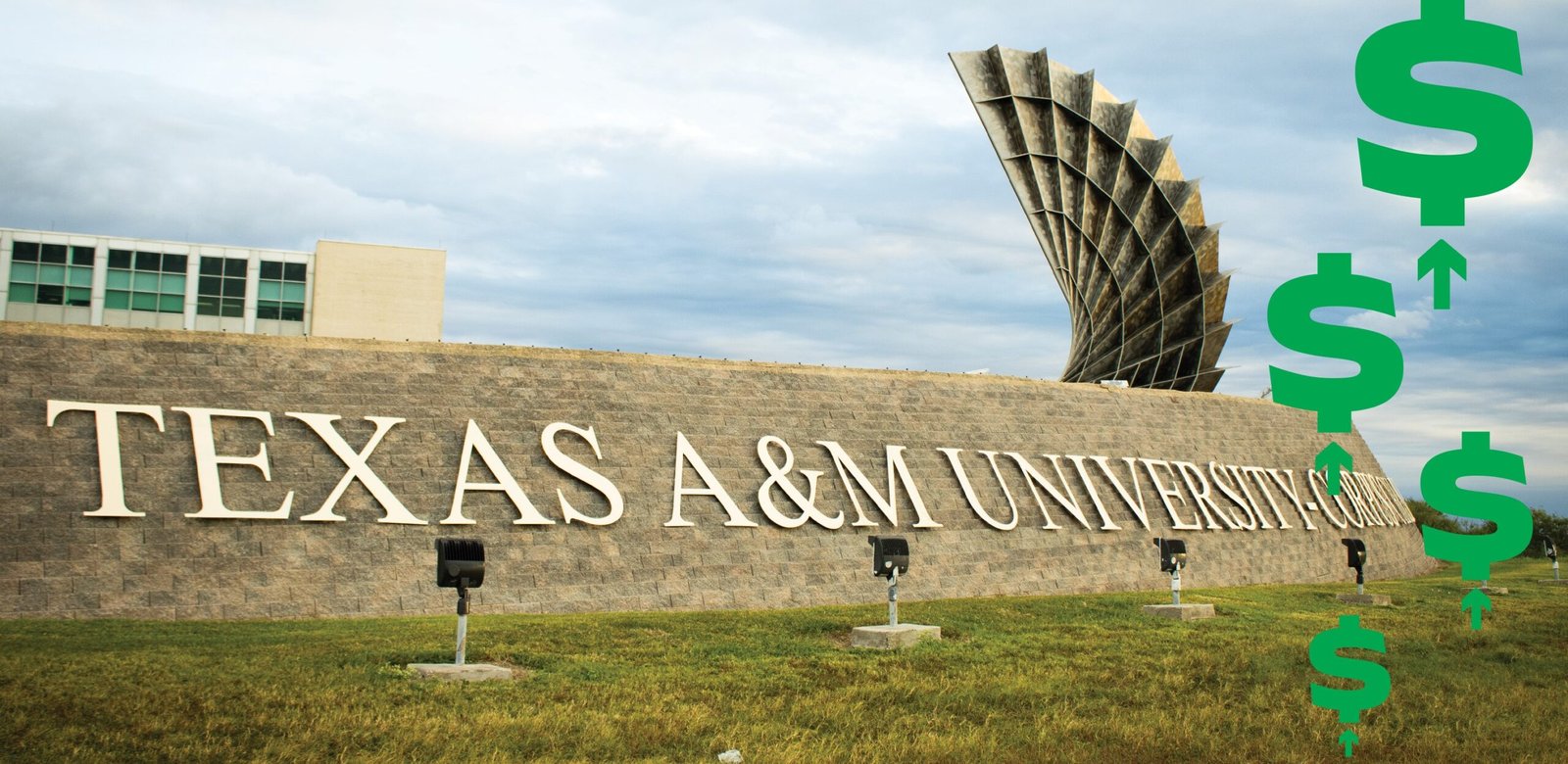Story by Jacob Schirmer | Translation by Victoria Escobedo
For the 2024–2025 academic year, tuition fees—among other costs associated with universities—are projected to rise across various institutions in Texas, including Texas A&M University-Corpus Christi. This overall increase will apply to both residential and non-residential students attending universities. The development constitutes an ongoing trend that the Texas Higher Education Coordinating Board has documented since at least 2015.
It is of note that a student’s actual charges may differ from the following data, as costs can vary depending on the student’s classification, level of enrollment, and personal circumstances. In terms of “Total Academic Charges” (statutory tuition, designated tuition, mandatory fees, and average college/course fees) for TAMUCC, costs have increased by $1,122 since 2015 for residential undergraduates, going from $4,263 in 2015 to $5,385 in 2022. This figure is slightly higher than the Texas state average of $5,252 according to the Texas Higher Education Coordinating Board.
To dig into specific data points noted over the 7-year timeframe, while statutory tuition has remained constant, designated tuition has risen from $1,755 to $1,911, a 9% increase. Mandatory fees have risen from $1,678 to $2,599, a 55% increase.
Lastly, average college and course fees at TAMUCC have risen from $80 to $127 during this time period, a 59% increase according to the Texas Higher Education Coordinating Board.
What do these statistics mean for TAMUCC students in terms of financial stress and political positions concerning student debt relief? To answer this question, an anonymous survey and two interviews were conducted.
The survey was conducted by the author online and offered to TAMUCC students via the “r/TAMUCC” Subreddit, the author’s “TAMUCC Unofficial” Discord server, and word-of-mouth sampling. Eleven respondents answered nine questions centered around their financial prospects and thoughts concerning the data at hand. One question asked students how concerned they were about their current finances, with nine reporting that they were at least moderately concerned—three of those selecting the “Decently Concerned” or “Highly Concerned” options.
After learning about the price increases during the survey, over half of those surveyed noted that they were more concerned about money than before, a sentiment echoed by Felix Luna, a junior graphic design student, “Well I mean I’m pretty stressed about it… So think about it from the standpoint of who’s actually prepared to pay for college and who isn’t; that’s kind of the way I think about it. There are those who are privileged enough to have the money to not even have to take out any student loans, and then there are some of us who are just working two or three jobs just to pay for the amenities that our student loans don’t cover.”
However, not all undergraduates are stressed about their fiscal matters. One of these students is Lanah Phan, a junior graphic design major, as she states, “I don’t really have much worry about that off the top of my head—I mean it’s always gonna be expensive, and you know it’s going to be expensive going in, right? You can’t do anything about it.” and “Well, I’m splitting [the payments] up with my parents, I’m responsible for about like one-third of my tuition, and my parents are splitting the other two-thirds. So I mean like, yeah, I’m going to be having to pay off some loans when I graduate, but I don’t think it will take too long.”
Phan is not alone in receiving family contributions, as most survey respondents noted they were also getting funds from relatives. For those currently receiving zero or next to no money from family, it appears that may be a stressor, as all three in this category reported they were at least moderately concerned. In response to a question about employment, 7 out of 11 of those surveyed said that they were working part-time and/or full-time jobs to help offset rising costs. Aside from these income streams, seven also signified that they have taken out at least some student loans to pay university tuition or expenses.
Another possible solution for loan borrowers to achieve monetary relief is the propagation of a student debt forgiveness policy, such as the Biden administration’s SAVE plan. Senior students responding to the survey showed the most conviction on the subject, with all indicating they either strongly support or oppose the idea.
Others, like Phan, currently have no opinions on the subject, as she states, “My mom is waiting for something like that to be passed—it was talked about in the news—because she went back for her master’s [degree] and she was hoping to get some of it forgiven, but I don’t really know much about it, so I don’t really have an opinion.”
“In terms of student living, I think there’s a huge percentage of us that feel like it’s almost a waste,” Luna said. “Think about it, two years into your degree right now, if somebody offered you a six-figure job, would you take it?…. If you lost that job and you didn’t have anything else to fall back on, who failed you? Was it yourself or was it the school system?”

